#Unbleached Arnold paper
Text
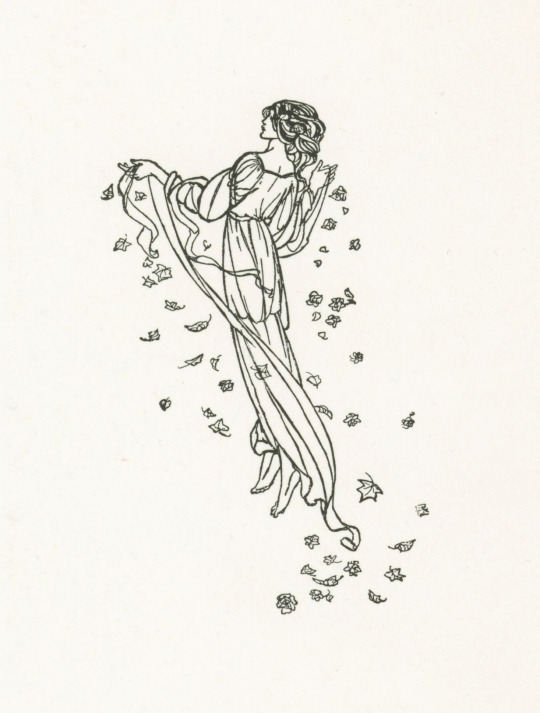
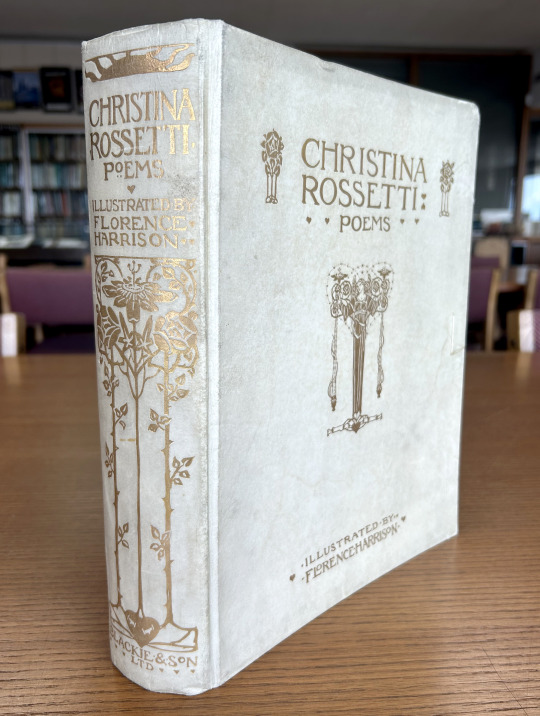

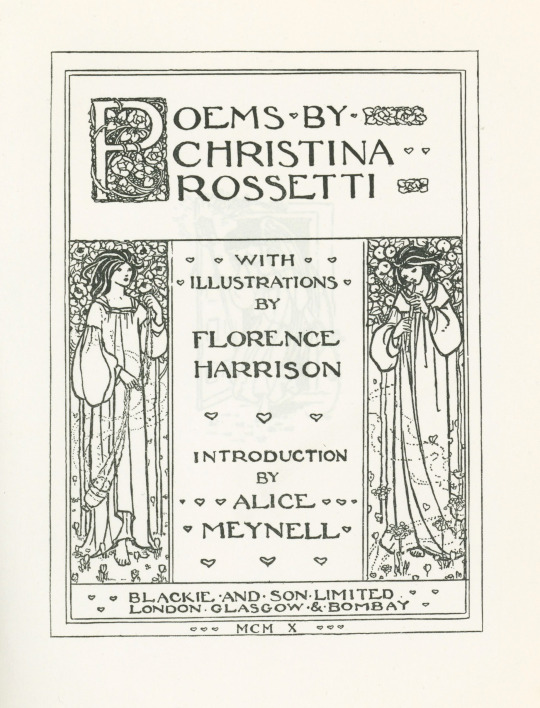




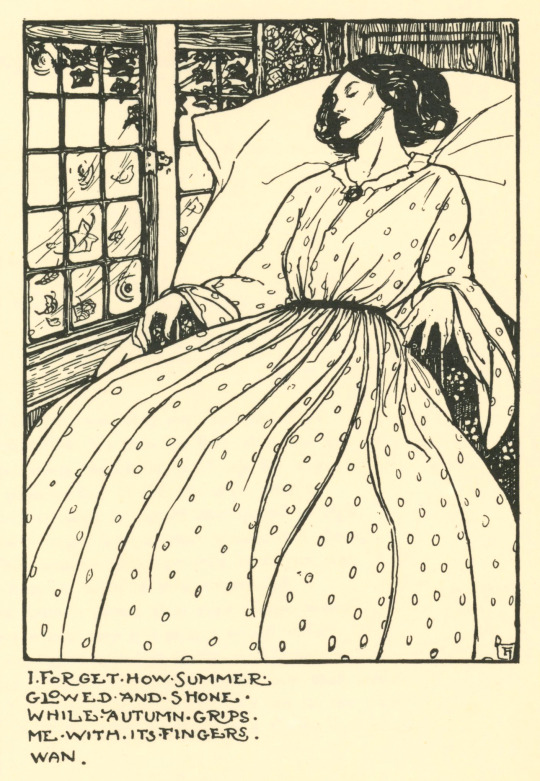

It’s Fine Press Friday!
Today we’re leaning into the drama with a 1910 edition of Poems from notorious bohemian and (unofficial) Pre-Raphaelite Brotherhood (PRB) member Christina Rossetti (1830-1894). This vellum covered, gilt stamped, 369-page tome was printed on Unbleached Arnold paper by the Villafield Press in Glasgow and published in limited run of 350 copies in London by Blackie & Son under the art direction of Talwin Morris. It features a praiseful yet cutting introduction from fellow poet, critic, and suffragist Alice Meynell (1847-1922) along with a wealth of illustrations (70 plates) by Florence Harrison (1877–1955) , an Australian illustrator of poetry and children’s books who worked extensively with Blackie & Son. Harrison’s style was inspired by the Romantic Era and the nature-worshipping, hedonistic values of the Art Nouveau and Pre-Raphaelite movements of the time. Fittingly, she also illustrated the works of fellow PRB poets William Morris (1834-1896) and Alfred Tennyson (1809-1892).
While many of the poems included are overtly devotional and express themes of purity, motifs of romantic love, limerence, melancholy, and death permeate the mood of the text as a whole. The Rossetti family, particularly Christina’s brother Dante Gabriel Rossetti (1828-1882) (poet, illustrator, painter, translator, and co-founder of the PRB) and Elizabeth Siddal (1829-1862) (artist, iconic art model, poet, and Dante’s longtime partner, muse, and eventual wife), are known for their exploits, excesses, creative legacy and influence on the culture of the era. Christina published her first poem at only 16, and Siddal posed for Millais's Ophelia at 19. The radical, passionate nature of the philosophies and lifestyle they embodied was as much a product of the intensity and privilege of their youth as of the Renaissance ideals and Victorian mores they rebelled against.
For a deeper dive on the Rossettis and their generation, check out this recent exhibition at the Tate Modern.
View another Christina Rossetti post
View another Dante Gabriel Rossetti post
View another Pre-Raphaelite post
View more Art Nouveau posts
--Ana, Special Collections Graduate Intern
#pre raphaelite#Christina Rossetti#Villafield Press#Blackie and Son#Blackie & Son#Dante Gabriel Rossetti#Pre Raphaelite Brotherhood#Romanticism#poetry#fine press#Unbleached Arnold paper#Alice Meynell#Florence Harrison#Elizabeth Siddal#limerence#bohemian#Talwin Morris#fine press fridays#Ana
167 notes
·
View notes
Text

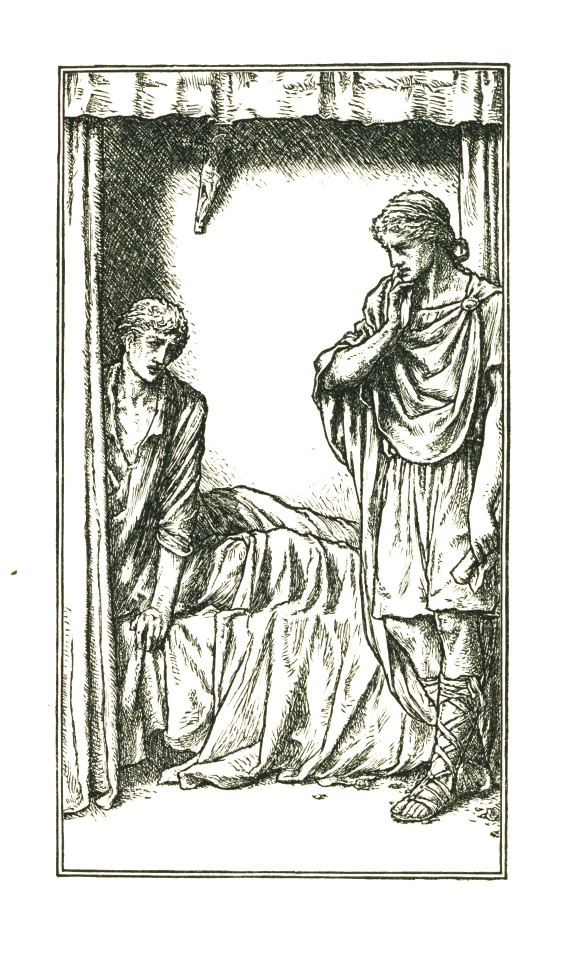
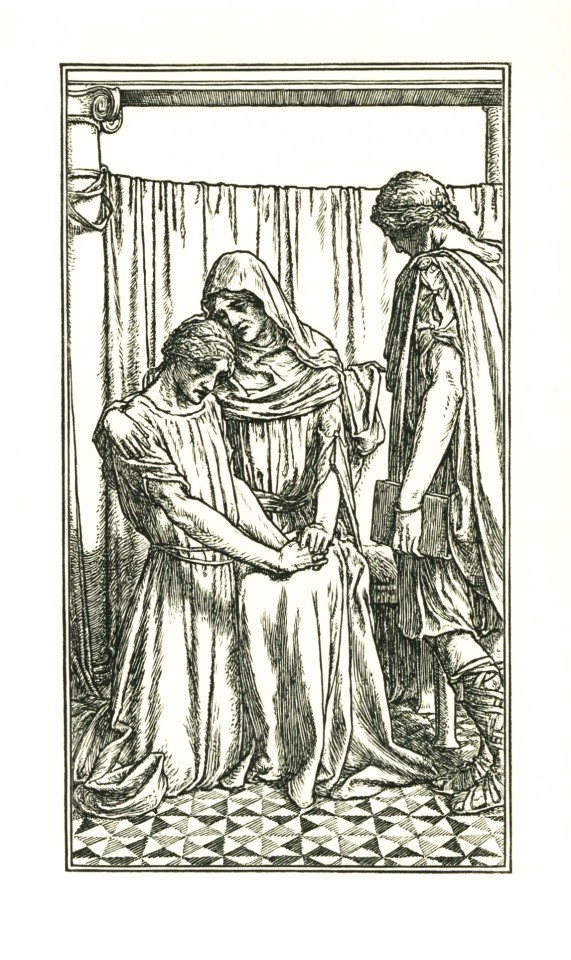

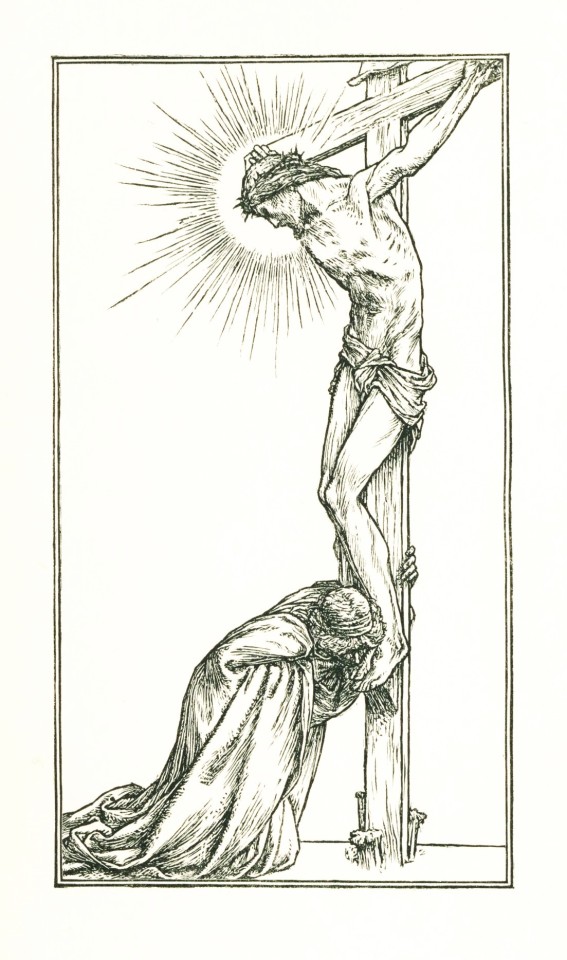
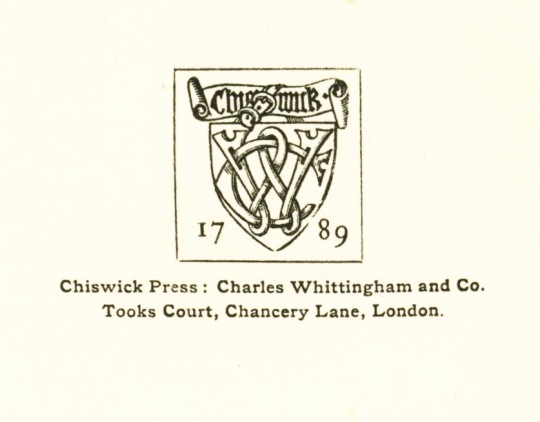
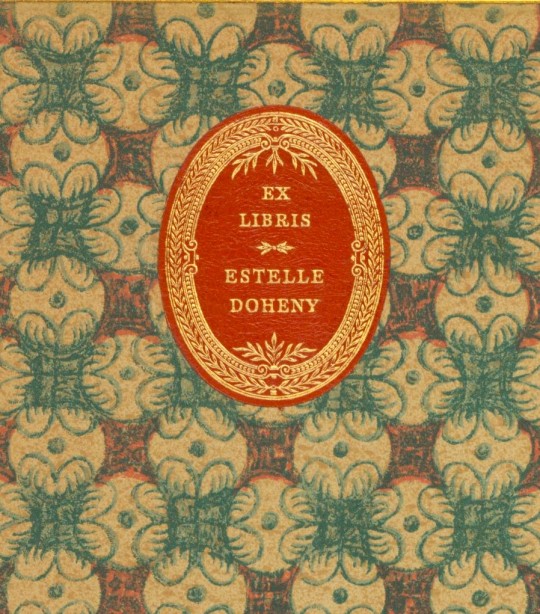

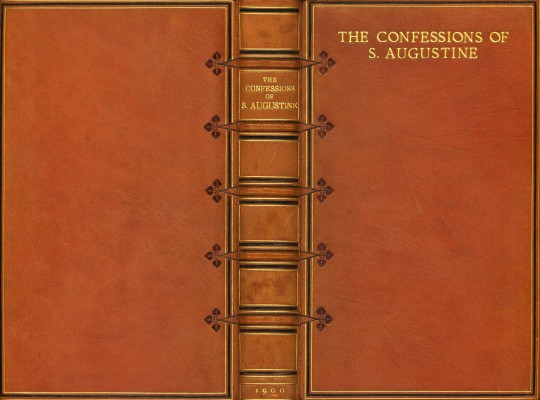

Wood Engraving Wednesday
This week we present a few wood engravings by English artist, writer, and suffrage activist Clemence Houseman (1861-1955) from a 1900 edition of The Confessions of St. Augustine published in London by Kegan Paul, Trench, Trübner & Co. Houseman worked from illustrations designed by British book illustrator Paul Woodroffe (1875-1954) and a title-page border designed by her brother Laurence Housman (1865-1959), with whom she was very close. Her other notable sibling was the classical scholar and poet A. E. Houseman (1859-1936).
The book was printed on Arnold and Foster's unbleached handmade paper and printed by Charles Whittingham and Co. of the Chiswick Press and was formerly owned by renowned book collector and philanthropist Estelle Doheny, and bears her bookplate. The book was full bound in brown, tooled, Morocco goatskin with patterned endsheets by the notable London bookbinders Sangorski & Sutcliffe for the J. W. Robinson Company, a southern California department store company which maintained a book department. Our copy is another donation from the estate of our late friend Dennis Bayuzick.
View more posts with wood engravings by Clemence Houseman.
View more posts with bindings by Sangorski & Sutcliffe.
View other books from the collection of Dennis Bayuzick.
View more posts with wood engravings!
#Wood Engraving Wednesday#wood engravings#wood engravers#women wood engravers#Clemence Houseman#Paul Woodroffe#Laurence Houseman#The Confessions of St. Augustine#Kegan Paul Trench Trübner & Co.#Charles Whittingham and Co.#Estelle Doheny#Sangorski & Sutcliffe#J. W. Robinson Company#Dennis Bayuzick
35 notes
·
View notes
Photo


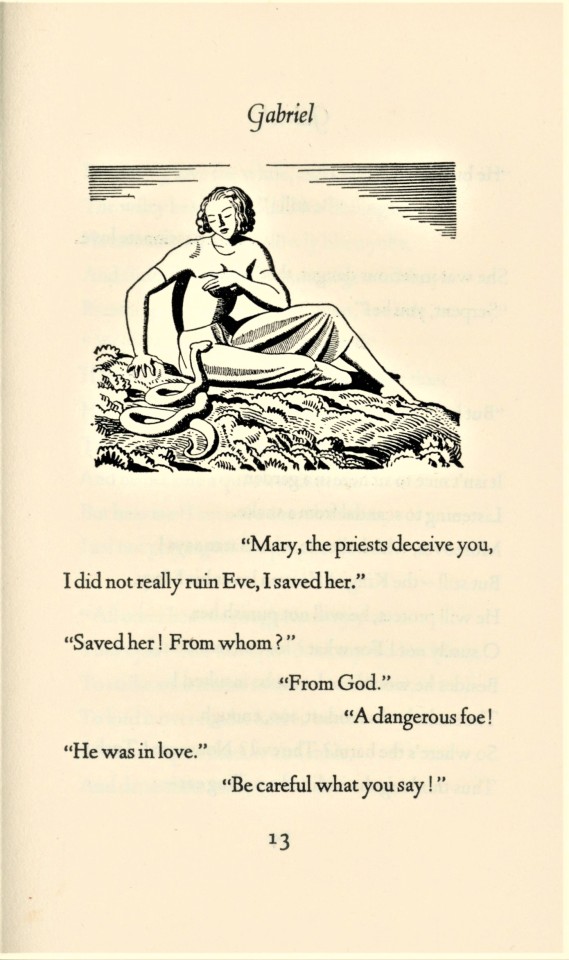



It’s Fine Press Friday!
This week we present a 1929 edition of Alexander Pushkin’s satirical and even blasphemous poem on the Lukan Annunciation story, Gabriel: A Poem in One Song, translated by Max Eastman, illustrated with original wood engravings by Rockwell Kent, and published in New York by Covici-Friede in a limited edition of 750 copies. The publication was handset by J. S. Jacobs and printed under his supervision at the Stratford Press in Frederic Goudy‘s newly designed Deepdene type on Arnold unbleached cream wove paper, and bound in limp vellum with a gold-stamped illustration by Kent at the American Book Bindery in New York.
Here’s Wikipedia’s synopsis of the blasphemous narrative:
God chooses [Mary] to be the mother of Jesus and sends Archangel Gabriel to announce the good news. Satan learns about God's plan and arrives first in the form of a snake to seduce and deflower Mary. Gabriel arrives too late to save her from Satan but manages to drive him off with an illegal punch to testicles. Then he quickly has his way with Mary, who had already seen him in a vision and was impatiently waiting for him. The next morning, God in the form of a dove flies into Mary's bedroom and has intercourse with her, thus thinking He has conceived Jesus.
Oh, my! Pushkin wrote the poem in 1821 while he was a student. It only circulated in manuscript and because of its impiety, it was never published in Pushkin’s lifetime. Still, enough had read it in manuscript to get the author in a lot of hot water, and it would have been off to Siberia for him if he had not appealed directly to the Tsar with the deepest contrition.
Covici-Friede was founded in 1928 by publisher Pascal Covini and Boni & Liveright vice president Donald Friede. It had considerable literary success in its short run, and Rockwell Kent corresponded with the firm from its founding to the time it folded in 1938. Gabriel was the first publication Kent illustrated for Covici-Friede and he would illustrate only one other title for them, a 2-volume Canterbury Tales published in 1930. We hold a 1934 second Covici-Friede edition of that title printed with Kent’s original plates from the 1930 edition. Our copies of Gabriel and The Canterbury Tales are both gifts from our friend Jerry Buff,
View more posts with illustrations by Rockwell Kent
View more Fine Press Friday posts..
#Fine Press Friday#Fine Press Fridays#Rockwell Kent#wood engravings#Alexander Pushkin#Max Eastman#Covici-Friede#Pascal Covini#Donald Friede#J. S. Jacobs#Stratford Press#American Book Bindery#Deepdene type#Gabriel: A Poem in One Song#Gabrieliad#fine press books#limp vellum#Jerry Buff
39 notes
·
View notes
Photo

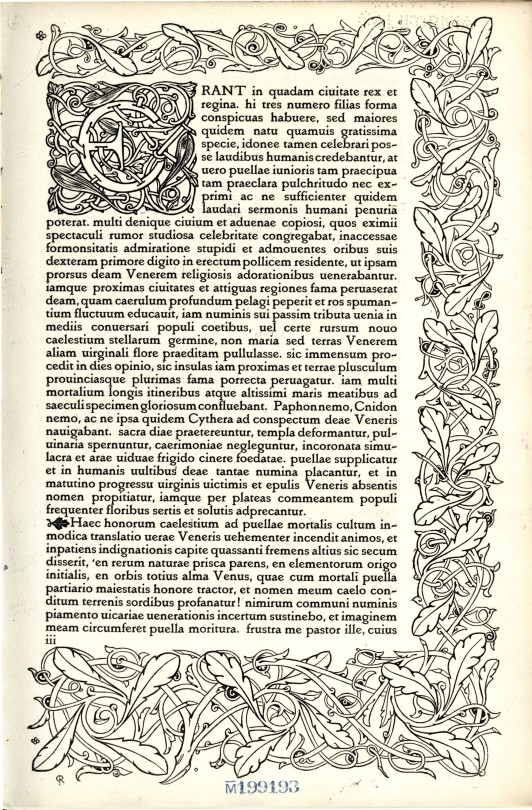




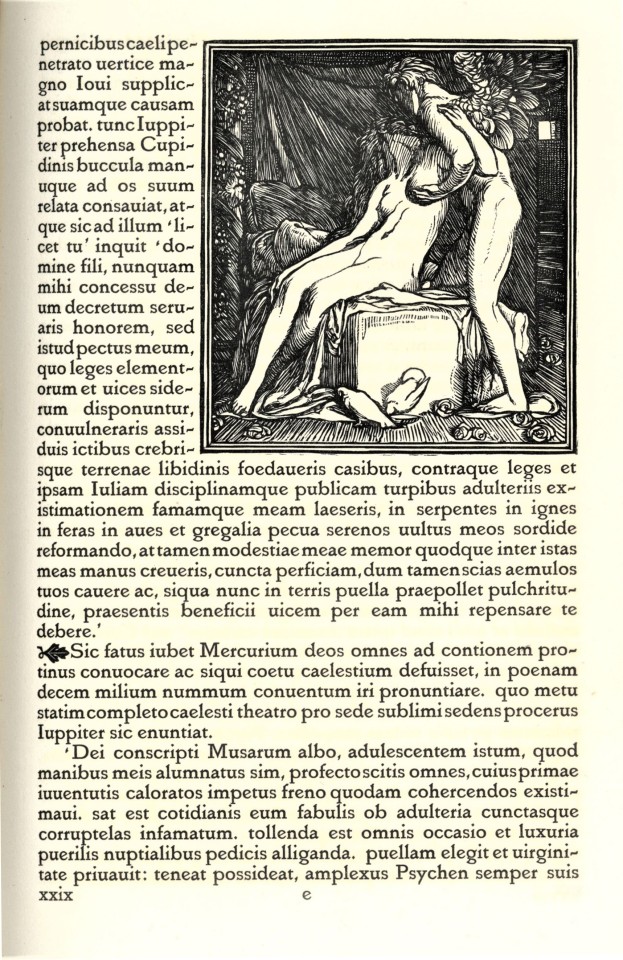
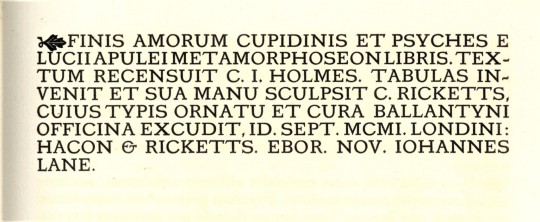

It’s Fine Press Friday!
This week we present pages from Charles Ricketts’s 1901 Vale Press production of De Cupidinis et Psyches Amoribus Fabula Anilis, printed in London at the Ballantyne Press in an edition of 310 copies. This tall, thin book includes five original wood engravings and one wood-engraved border design by Charles Ricketts. The Latin text was carefully reviewed by Vale Press manager Charles John Holmes and printed in a Venetian-style type called Vale, designed by Ricketts and produced in 1895, on unbleached, handmade paper by Joseph Arnold bearing the Vale Press watermark.
In his diary Ricketts states that the illustrations were “all old designs save the last one,” and he worked on engraving them throughout February 1901. The printing of the book was completed in September of that year, and special collections librarian Maureen Watry claims in her 2004 book on the Vale Press that “Undoubtedly, one of Rickett’s motivations for printing a Latin text was the opportunity to display the Vale fount to its best advantage. . . . The presence of fewer tailed letters gives the printed page a greater evenness of effect, especially in the large format that Ricketts chose for this text.”
The edition was sold by Hacon & Ricketts (William Llewellyn Hacon was Ricketts’s business partner) and John Lane, The Bodley Head. Our copy, which was withdrawn from UC-Berkeley’s Bancroft Library, is another donation from our good friend Jerry Buff.
View our other posts on the Vale Press.
View more Fine Press Friday posts.
#Fine Press Fridays#Charles Ricketts#Vale Press#De Cupidinis et Psyches#Cupid and Psyche#Charles John Holmes#Joseph Arnold#Ballantyne Press#Vale type#Maureen Watry#wood engravings#Hacon & Ricketts#John Lane#Jerry Buff
115 notes
·
View notes